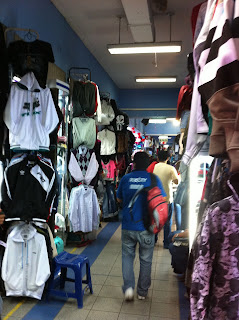Barranco is one of the most picturesque and interesting neighhboods in Lima. It is nice and safe but chic and grungy at the same time. Barranco is located between the neighborhoods of Chorrillos to the south and Miraflores in the north.
The district of Barranco dates back to the 1800s but there was settlement here along the coast as early as the 1500s. Barranco is at the same time historic and gentrified and young and vibrant.
I always think that Barranco reminds me of the East Village in New York City or East Berlin. The people here in Lima say Barranco is very bohemian. If you come here looking for a place to live know that bohemian does not mean cheap. Barranco is known to be a semi-pricey place to live in Lima.
Some of the more famous sites include the puente de suspiros (bridge of sighs), bajada de los baños, and the main plaza with the church.
Many of the streets have are lined with graffiti and the streets are filled with kids riding skateborads. The attitude here is young and hip. Have a coffee and enjoy. This is the place to watch the sea, enjoy the hipsters and chill out.
A good Spanish-language resource for Barranco is the following: http://www.barranco.net





































